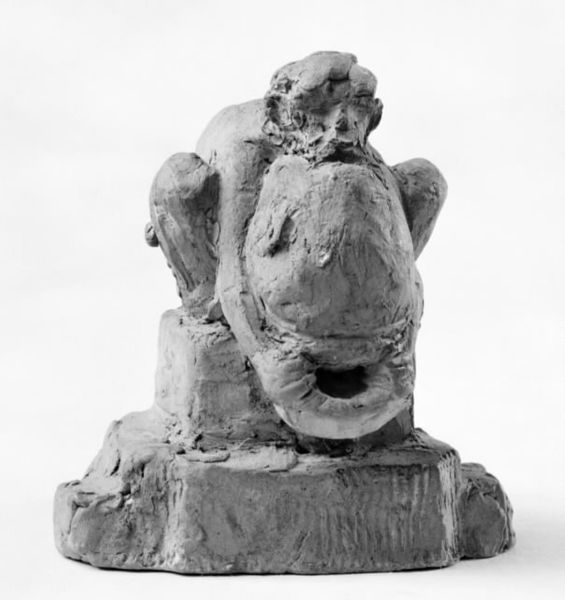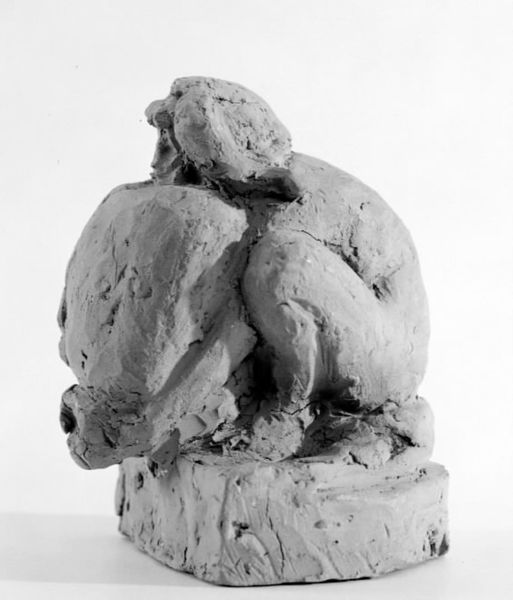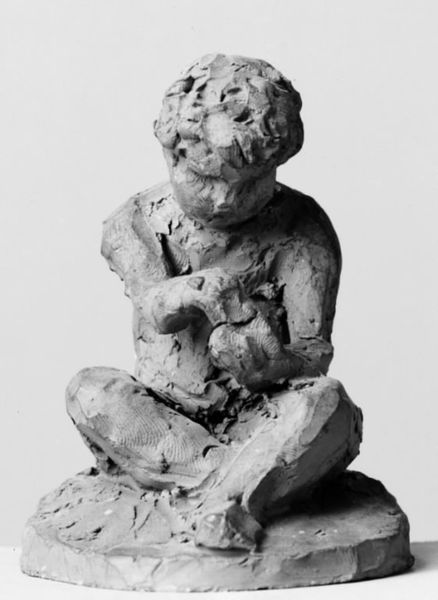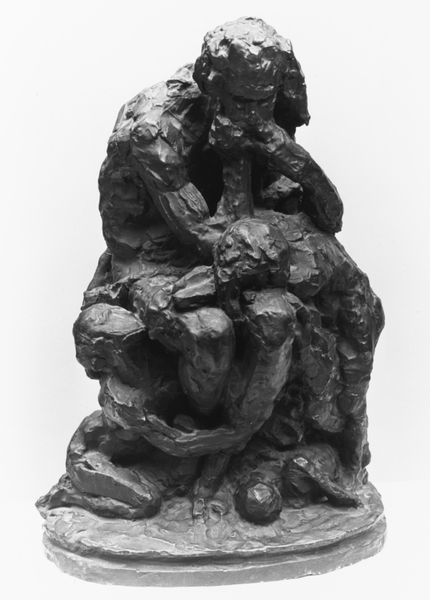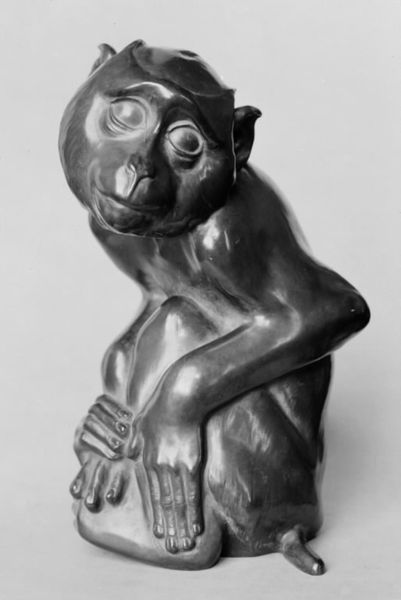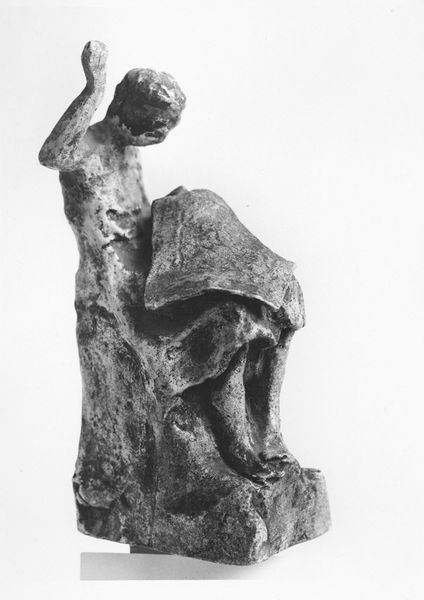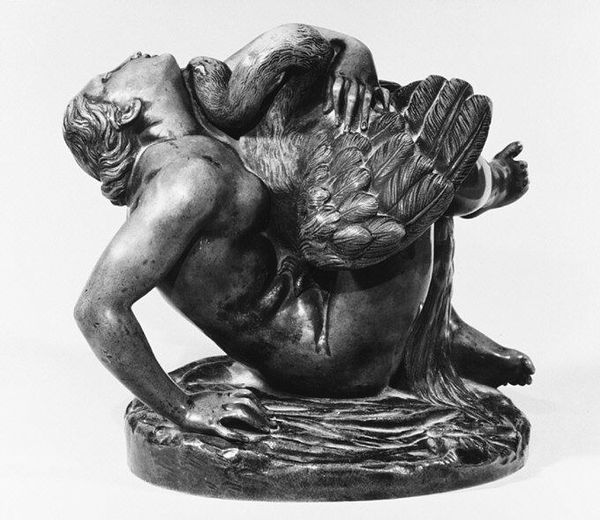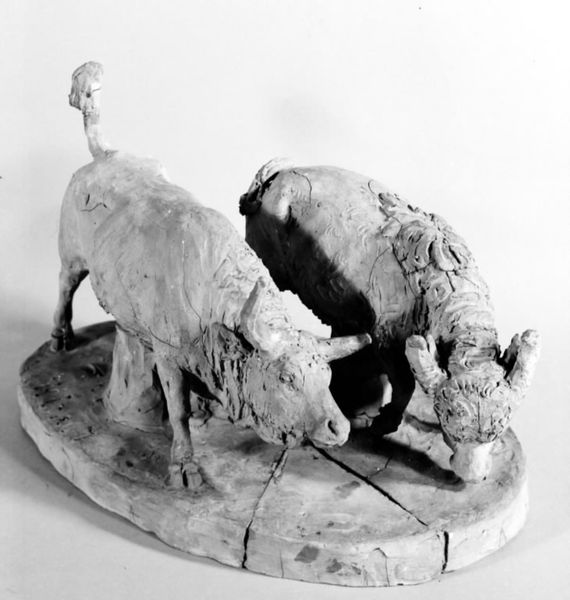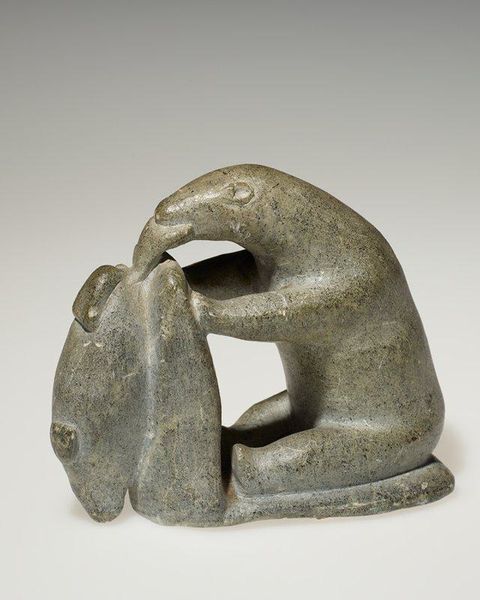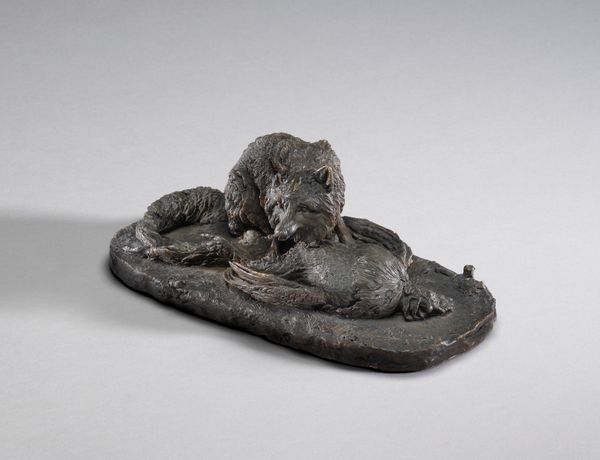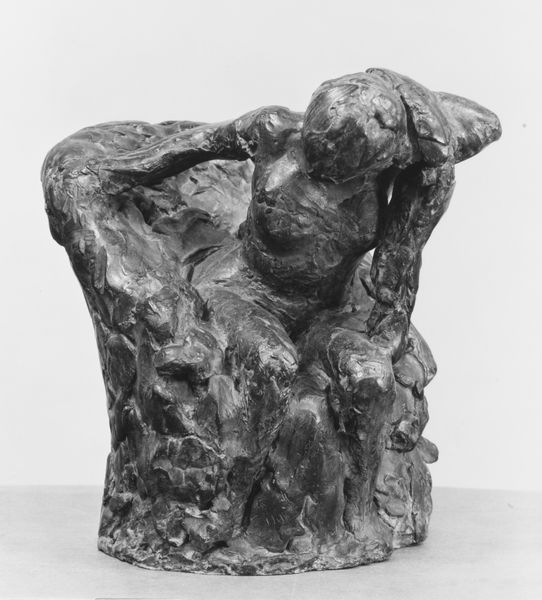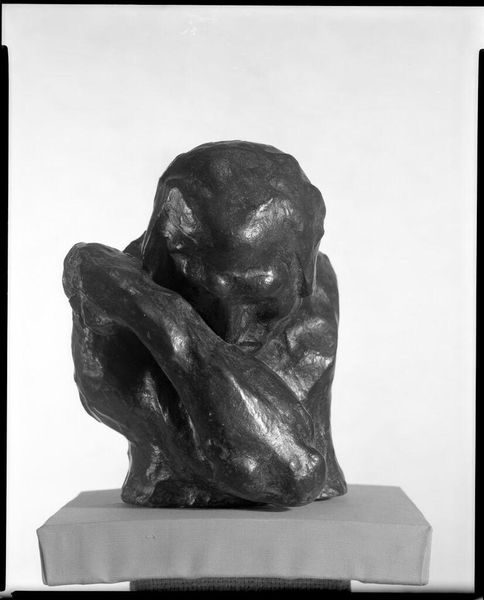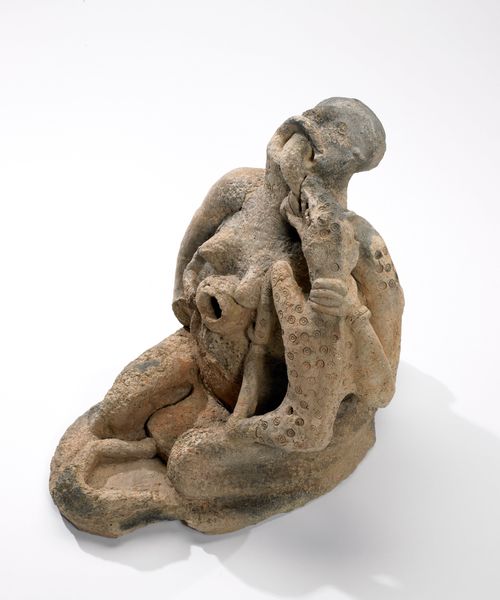
Nøgen kvinde med krukke, siddende ved trekantet bassin 1879 - 1937
0:00
0:00
bronze, sculpture
#
portrait
#
sculpture
#
bronze
#
figuration
#
sculpture
Dimensions: 11 cm (height) x 13 cm (width) x 14.5 cm (depth) (Netto)
Curator: Anders Bundgaard's bronze sculpture, "Nogen kvinde med krukke, siddende ved trekantet bassin" which translates to "Some Woman with a Jug, Sitting by a Triangular Basin," created sometime between 1879 and 1937, invites us to contemplate the figure in relation to its setting. What are your first impressions? Editor: There's a profound sense of weight here, both physical and emotional. The woman's posture speaks of exhaustion, perhaps even resignation, and the rough texture of the bronze reinforces this feeling. The basin itself looks almost like a tomb. Curator: I agree. The sculpture resonates with themes of labour and female representation in the late 19th and early 20th centuries. The anonymous title "Some Woman" emphasizes her position as representative of a collective experience, likely a working-class woman. Her posture and placement, almost captive beside the angular basin, echoes a larger narrative of constraint and limited opportunity. Editor: It also evokes a visual language associated with water goddesses and nymphs throughout art history, particularly figures associated with fountains or wells. The triangular basin, though crudely shaped, suggests ritual cleansing or sustenance. Does the jug represent the potential for life, a source of hope even in this scene of apparent weariness? Curator: It could signify that; considering feminist readings of mythological art and cultural theory of Bundgaard’s historical context. It might be valuable to think about how expectations and social constructs contribute to and limit this woman's self-definition. This depiction resonates with a long history of objectification and control of the female body within social constraints, reflecting a broader systemic exploitation of marginalized identities. Editor: So it is both specific and archetypal, a portrait of a woman at a particular time, but also an embodiment of something timeless. She's caught between tradition, possibly as a figure providing symbolic or actual water, and her reality of struggle. There is continuity from the distant past, and the historical legacy imposed in modern life. Curator: Absolutely. And I think her downcast gaze reinforces the sense of introspection, but it may also speak to a quiet resistance against societal expectations and cultural norms. The sculpture sparks conversations about the interplay between identity, historical narrative, and resistance. Editor: A truly powerful work. Bundgaard manages to weave layers of meaning through seemingly simple forms, inviting contemplation about the enduring relationship between humanity and symbolism.
Comments
No comments
Be the first to comment and join the conversation on the ultimate creative platform.
